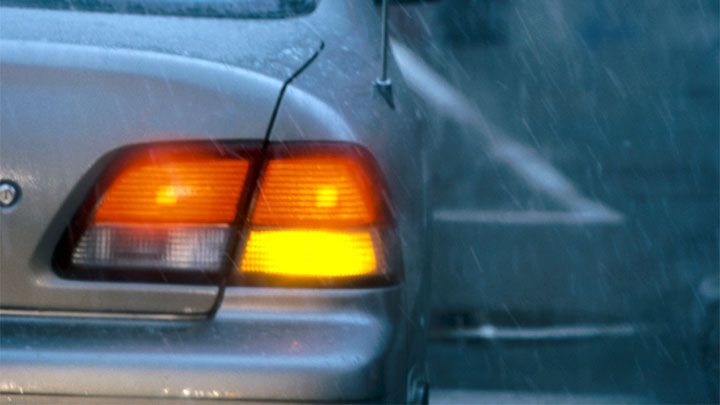Last Updated on January 5, 2022
From time to time, every driver is faced with a specific scenario that they might not have previously encountered. When this occurs, a number of questions arise, as the driver in question ponders the reason behind any sudden irregularity in their vehicle’s operation.
One such occurrence that often catches the attention of an attentive driver, is when a turn signal flashes fast on one side of their vehicle, but not on the other. While a relatively common occurrence, some confusion remains as to the root cause of this troubling condition.
In reality, a turn signal’s bulb can strobe rapidly for a number of reasons, potentially indicating several different issues. Read on to learn more about fast blinking turn signals, as well as how to remedy such an issue, should it arise in the future.
How Do Turn Signals Work?
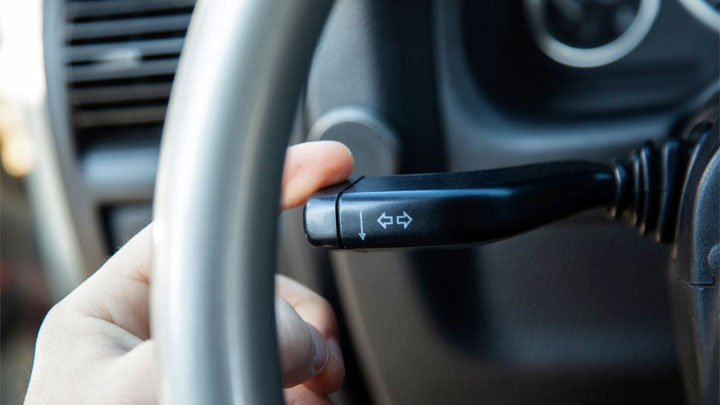
To understand the cause of a rapidly blinking turn signal, one must first grasp the basic principles of turn signal operation. A vehicle’s turn signal circuit is provided power through a fused hot wire, which most often originates within the underhood junction box.
This hot wire delivers power through a flasher module to the turn signal switch, located along the vehicle’s steering column. When a driver toggles the turn signal switch upward or downward, the circuit is completed, thereby sending power to both the front and rear turn signals for the side of the vehicle that has been selected.
Instead of sending constant power to these bulbs, power is momentarily interrupted, as it is directed through the circuit’s flasher module. This module uses a heat-sensitive contact, which expands/contracts, effectively making and breaking connections.
The flasher module operates off of the principle of resistance, which is impacted upon the circuit as power is transferred to a turn signal bulb’s filament. By design, a broken filament within a turn signal bulb reduces this resistance, thereby causing the flasher module’s operation to speed up, which in turn causes the remaining bulb to flash at a much faster rate.
See Also: Brake Lights Won’t Turn Off? (How to Fix)
Common Causes of a Turn Signal That Flashes Fast
While diagnosing a fast blinking turn signal bulb is generally considered to be a rather straightforward procedure, attention to detail remains paramount. A condition of this nature can be caused by one of several different underlying issues.
The following are several of the most common causes of a fast blinking turn signal.
- Faulty turn signal bulb
- Improperly selected turn signal bulb
- Compromised flasher module
- Damaged turn signal wiring or socket
- Hyper flashing induced by a recent upgrade to LED bulbs
See Also: Pros/Cons of Xenon Lighting
How to Fix a Turn Signal That’s Blinking Fast
When attempting to fix a turn signal that blinks rapidly, one must first determine the root cause of the issue at hand. By following the steps below, you will be able to quickly diagnose your vehicle’s lighting fault, thereby allowing you to quickly remedy that which proves problematic.
#1 – Check Turn Signal Operation
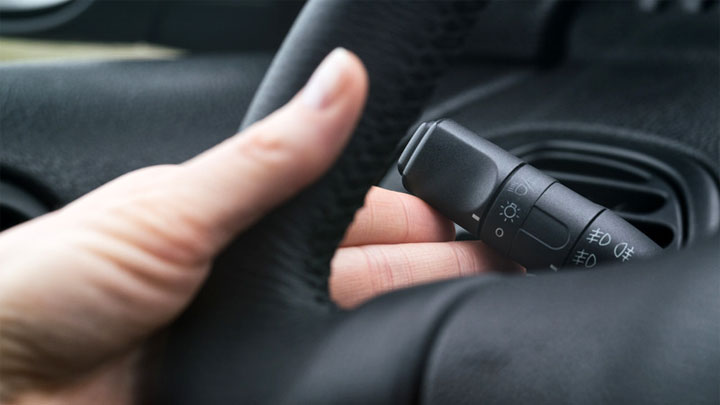
When attempting to determine the root cause of a turn signal-related issue, it is important to conduct a quick walk around of your vehicle.
After toggling your turn signal switch to one direction or the other, verify that both the front and rear turn signal lights of this side function as expected. Then, repeat this process with the turn signal switch engaged in the opposite direction.
#2 – Check Power/Ground To Inoperable Lights
If any turn signal lights are found to be inoperable, it is important to check for proper delivery of power and ground at the corresponding plug. This can be done by removing the bulb in question and probing the prongs of the receptacle with a test light.
With the clamp end of the test light connected to a ground, one prong of the bulb receptacle should prove hot, thereby illuminating the test light. Likewise, contact with the other prong of the receptacle should illuminate the test light, when the light’s opposite end is attached to a 12-volt power source.
#3 – Replace Faulty Bulbs
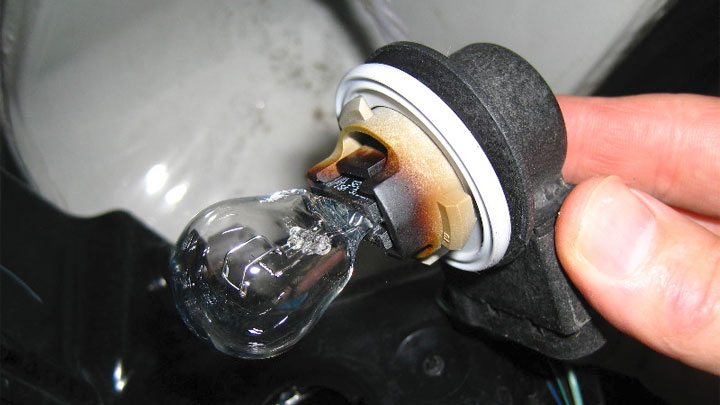
If an inoperable turn signal bulb was found during “step 1”, yet proper delivery of power and ground was verified, a new bulb should be installed. After installation has been completed, verify that the bulb illuminates and flashes as expected.
In the majority of cases, this will also restore the flashing of all turn signal bulbs to their normal pace.
See Also: Moisture in Your Headlights? (How to Fix)
#4 – Replace Flasher Relay (If Necessary)
If your vehicle utilizes standard non-LED bulbs, yet the replacement bulb replacement does not remedy your concerns, a bad turn signal relay becomes suspect. This module can be sourced from almost any auto parts store, and can typically be purchased for a rather reasonable price.
The installation of this relay is also generally no more difficult than replacing a fuse. However factory-specific service literature should be consulted when attempting to locate the module in question.
#5 – Correct Resistance Related Issues
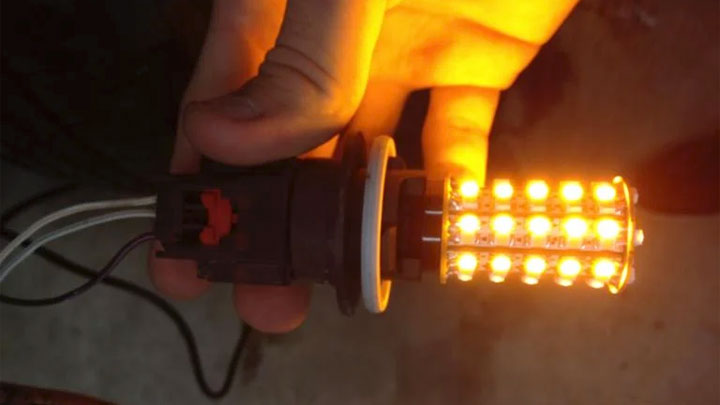
If you have recently replaced your vehicle’s standard turn signal bulbs with replacement LED turn signal bulbs, then it is a good chance that you are encountering resistance related issues.
Since a vehicle’s flasher module relies upon resistance within the circuit for proper operation, the installation of low-resistance LED bulbs can cause a flasher to cycle rapidly, as if a bulb’s filament was open.
To correct this condition, specialty inline resistors can be purchased and installed, thereby restoring a flasher module’s tropical operating characteristics.
See Also: Why Your Tail Lights Don’t Work (But Brake Lights Do)
Is a Fast Blinker Illegal?
The issue of whether or not a fast blinker is illegal is largely open for interpretation. The Department of Transportation specifies that a vehicle’s turn signal is not to exceed a rate of 120 blinks per minute. However, individual state laws might present an even lower acceptable maximum threshold.
As a result, the legality of hyper flashing is largely dependent upon the exact speed of flashing as it occurs, and the state in which one is driving.
At the very least, hyper flashing can draw additional scrutiny from law enforcement. This stems from the fact that the rapid strobing of a hyper flashing turn signal can be quite distracting to fellow motorists.

